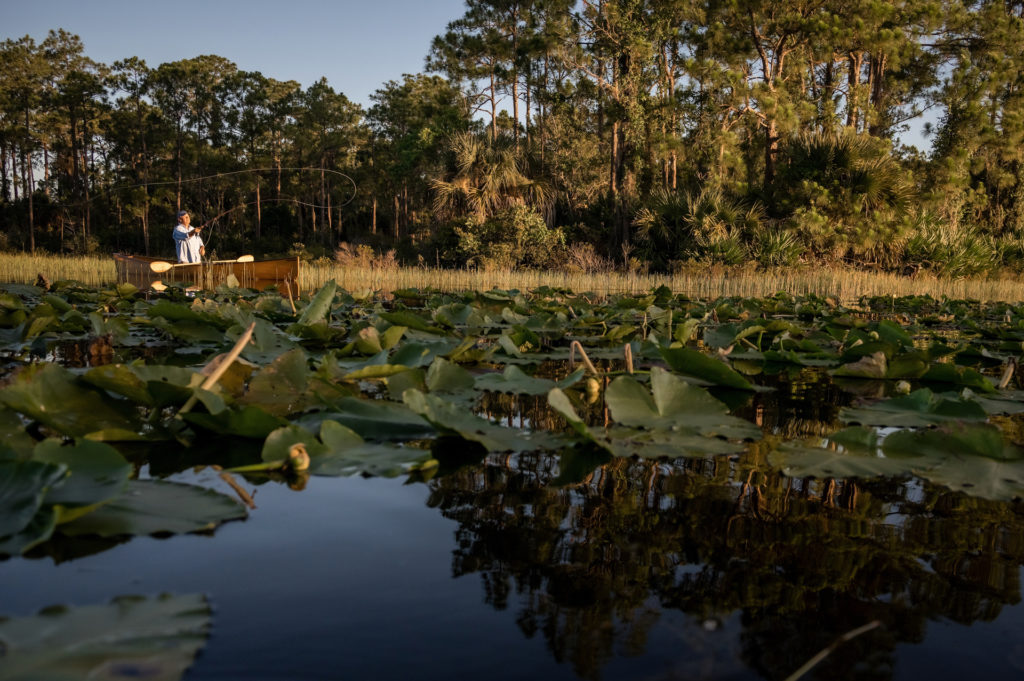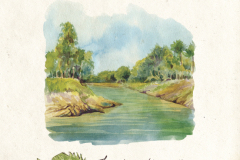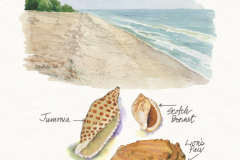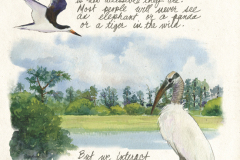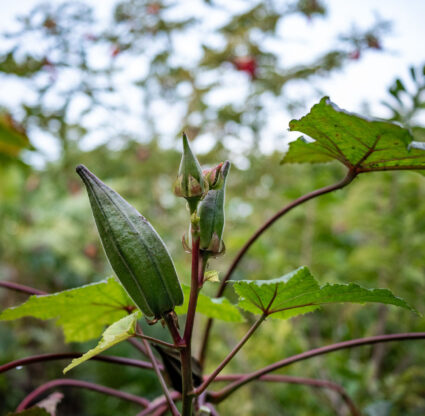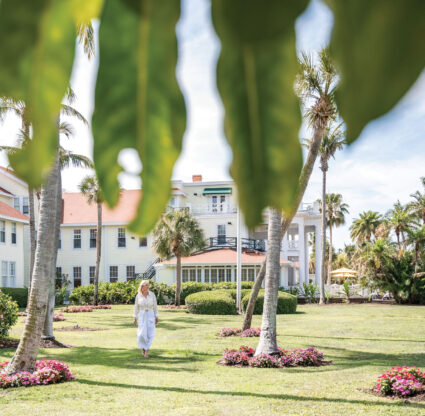Hearing the scratchy weep of a Florida scrub jay, casting out in your own slice of paradise, finding an elusive junonia shell—many of Southwest Florida’s most epic experiences happen in nature. And, it’s not surprising considering our region is a hotbed for wildlife and outdoor recreation. Here, three local experts share why there’s no better place to bird, fish or shell than along the Gulfshore. (See Illustrations by Gay Kraeger)
On Birding
Rochelle Streker is a bird biologist and the Southwest Florida Shorebird manager for Audubon Florida. Rochelle, who’s in the field daily, tracking our winged residents, firmly believes birds connect us to nature more than any other animal.
As told to Artis Henderson
On my days off, when I have 20 minutes in between running errands, I stop at Donna Fiala Eagle Lakes Community Park in Naples. I grab my 10X42 Maven binoculars, put my husband’s old button-up shirt over my tank top to keep the bugs off, and then I make a loop around one of the park’s lakes. I can spend hours with all my gear—binoculars, scopes, cameras—or I can take a nice little walk and try to see what I can spot.
In my time off, I like to look for birds I don’t see on the job. As the Southwest Florida Shorebird Manager for Collier and Lee Counties at the Audubon Society, I’m on a boat most days by 7 a.m., surveying critical wildlife areas, a lot of them centered around the Rookery Bay National Estuarine Research Reserve. I work with iconic Florida shorebirds like black skimmers, least terns, Wilson’s plovers and snowy plovers. I spend so much of my time birding on beaches and coastlines that when I bird for fun, I like to head inland to freshwater spots. I look for perching birds and migratory warblers like black-bellied whistling ducks, green-winged teals and pied-billed grebes.

Eagle Lakes has a ton of wading birds, and it’s a great place to ID different species. One of my favorite wading birds is the wood stork. I love the bigness of them and their naked head, which is a unique feature for birds. Southwest Florida also has a lot of egrets and many are similarly colored. Sometimes, I’ll see a big white bird on tall legs from a distance, and as I get closer, I can tell it’s a great egret by its long white neck and the patch of green lores from the base of the bill to the front of the eyes. I might see a smaller white egret, and with my binos I can tell if it has black legs with bright yellow feet, almost like it’s wearing little rain boots. That’s a snowy egret. If it has black feet, then it’s a little blue egret. They’re white for the first year of their life, so if I see one with white or calico plumage, I know I’m looking at a baby bird.
Some of my other favorite spots to bird include Tigertail Beach, Clam Pass Park, Lovers Key State Park, Bunche Beach Preserve and the J.N. “Ding” Darling National Wildlife Refuge. We’re really lucky in Southwest Florida. We have a lot of nice shorelines here, and we get to see even more birds than in other parts of the state. About 500 species of birds pass through Florida at different times of the year, and we’re the last stopping point on the annual migration for a lot of species. We also have really beautiful birds that spend the whole year with us, like roseate spoonbills, burrowing owls, Florida scrub jays, mangrove cuckoos, snail kites and reddish egrets. And, yes, flamingos! Collier County had its first confirmed flamingo sighting in January, down in the Ten Thousand Islands.
I like to go birding first thing in the day. Most birds sleep through the night, so they’re hungry when they wake up—just like us. They need to go in search of food right away, so that’s when you’ll see them flying around. There are still birds around in the middle of the day; they just don’t make themselves that obvious. One of the best things about birds is how accessible they are. Most people will never see an elephant or panda or a tiger in the wild. Those are cool species, but we’re not interacting with them day-to-day. But we interact with birds every day, and they connect us to our natural world.
On Fly Fishing
Joe Mahler is an illustrator and renowned fly casting coach living in Fort Myers. He loves to fish the freshwater lakes and creeks, looking for native species—and he loves teaching people to cast even more. Joe shares what drew him to the sport and why there’s no better place to fish than here.
As told to Graham Averill
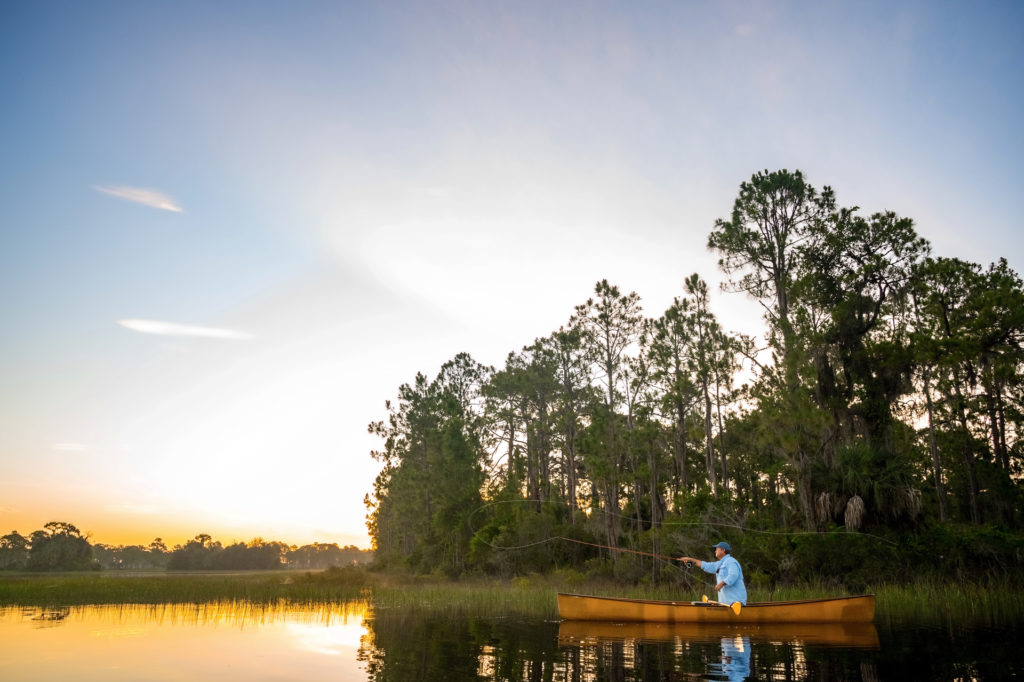
I was 11 when I got my first fly rod. I had no idea what I was doing. I put worms on the end and used the rod like a cane pole. But I loved everything about it. I loved the line; the rod. I loved the motion of it. We had a lot of ponds and creeks around where I grew up in Indiana. I was a fidgety kid. All I ever wanted to do was fish. But my dad and I used spinning reels, and I’d get in trouble because he wanted me to sit there and watch the bobber. I couldn’t do that. I was too restless. All I wanted to do was pull the line out of the water and cast it back into the water.
That’s the beautiful thing about fly fishing; it’s continuous motion. It’s perfect for someone who doesn’t have a lot of patience. That’s why kids pick it up really easily—they’re always moving.
I never expected to teach. But now I get more of a thrill from watching someone hit a target from 50 feet away than I do catching a bonefish. For me, the appeal has always been about perfecting the cast, not catching fish. There are a lot of different ways to cast—if you’re enjoying it, you’re probably doing it right. But there are some principles. My cast is smooth. It glides. That’s the goal. If you can make your cast glide, that’s as good as it gets. Your cast should feel rhythmic, like you never stop moving, and it’s harmonious. I call myself a fly casting coach. I set up cones and hoops in the grass and have a casting pond in my neighborhood where I do my lessons.
It’s easy to get people to Southwest Florida to fish. We have the occasional hurricane warning that will put you down, but otherwise, it’s 350 days of fishing weather a year. It’s paradise. There’s so much water down here, and most of it is public access. In Indiana, you had to know the farmer to get access. Down here, if you see water, it’s probably fair game.
Saltwater fishing is great, but I love freshwater fly fishing in our ponds and canals. We also have a few rivers feeding into the Gulf. I like Shell Creek in the Peace River system near Punta Gorda with its narrow and twisty creeks, and where you can always find shade—that’s where the fish hide from the heat. I’ll fish one side in the morning and the other side in the afternoon on 4- and 5-weight rods looking for smaller fish, preferably native species. There is a fish called a stumpknocker. It’s a panfish, a small thing that doesn’t get big. You’ll never catch one in an ugly spot. They only like beautiful places. I’d rather not catch fish in a beautiful place than catch a lot of fish in an ugly place. The fly line is the cord that connects me to nature. I bird-watch through fly fishing. I hike because of fly fishing. I paddle because I’m fly fishing. That’s the connection to everything I do.
Everyone should take a swamp walk through the Everglades. Take your fly rod and hike through the water up to your knees in a place like Big Cypress National Preserve. You think the swamp is stagnant and mucky, but it isn’t. On a good day in the Everglades, you’ll catch nine species of fish, from gar to sunfish. And you’ll see a lot of other wildlife, too. You get used to the alligators. If you find good fishing, you’re gonna find alligators. But like most wildlife, if you leave them alone, they won’t bother you.
I love the balance of fly fishing. Everything about it relies on balance: the equipment, how the line works with the reel, the balance of the cast, which is two parts back cast and a matching forward cast. Then there’s the balance of perfecting your skill and actually fishing. They should be equal parts, in my mind. Some people are so concerned with catching fish, but that’s just a piece of it. The way I see it, fly fishing gives you something to do when the fish aren’t biting.
On Shelling
Dr. José Leal is the science director and curator at the Bailey-Matthews National Shell Museum on Sanibel Island. Here, he shares his favorite shells, why water shoes are key and your best bet for finding the iconic-but-elusive junonia.
As told to Artis Henderson
The day after a big storm has blown in, you’ll find avid collectors on the beach, because that’s when the shelling is best. I like the Sanibel side of Blind Pass. An hour before low tide and an hour after are the most fruitful. The most diehard aficionados hit the beach at 2:30 a.m. with their flashlights. If you’re looking for a junonia, that’s what it takes.
Junonias are extremely rare. Here on the beaches of Sanibel and Captiva, they’re difficult to find washed up on shore. The junonia has to make a long trip to shallow waters, and along the way, the shells hit coral edges and break, or they lose their color, so finding one happens infrequently—and finding a perfect one is even more uncommon. But that doesn’t stop people from trying.
For someone hellbent on finding a junonia, the chances are higher in the winter than in summer because of the wind patterns. A cold front blows in from the northwest, and when it gets to Florida, it blows with the perfect wind that causes the water to move in the right direction, accumulating lots of shells on the beach. After a storm has come in, I’ll find piles of shells 3-feet deep. I stick my arm into a pile and never touch sand. When that happens, it doesn’t pay to walk randomly down the beach. It’s better to sit down and dig through the pile.
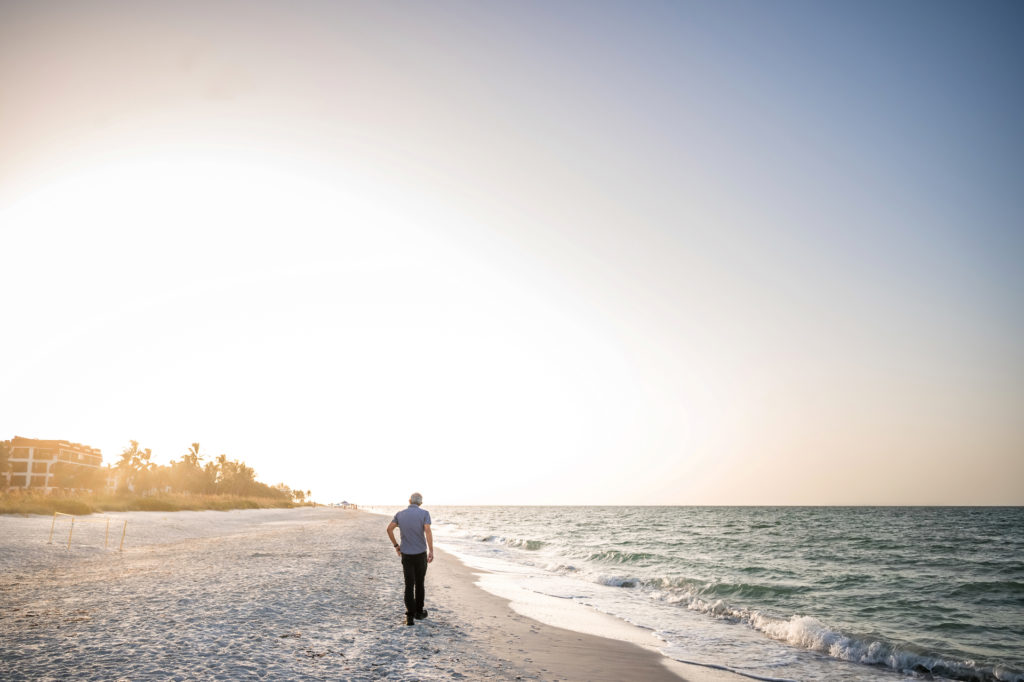
I still look for junonias when I’m on the beach, but I like other shells that are easier to find, like scotch bonnets, named for their tartan-like pattern. They’re relatively common in other parts of the country, but it’s still a big deal to find them around there. The northern lion’s paw—a bivalve species of scallop—is relatively uncommon around here, too. People usually just find fragments. I also like nutmegs, for their rounded shape and cream-and-brown lattice patterns, and wentletraps—the name is Dutch and means “spiral staircase.” There are several more common ones that I call the ugly ducklings, which most people overlook, but I really like. One is the kitten’s paw. It has a zigzag edge like an industrial roof. When the two sides of the shell are joined, nobody can get in. It’s like a miniature fortress.
If I’m walking, I wear my water shoes to protect my feet. I still have two parallel scars from the time I sliced my foot open on oyster shells off Cayo Costa State Park. I also like to bring a scooper, the kind with a mesh basket on the end of the long stick. I walk the line of the water where the water meets the sand and forms a little trough. That’s the best place to dig in. Of course, there’s always the Sanibel stoop method, where you bend at the waist to pick up shells. But too much of that is hard on the joints.
The funny thing is, I don’t even have my own shell collection. I’ve been at the Bailey-Matthews National Shell Museum on Sanibel Island since 1996. My career has been in the museum profession since the 1970s—that’s a heck of a lot of time. All of the institutions where I’ve worked required that a professional not have a shell collection. There’s too much of a conflict of interest. Say we go on an expedition to the other side of the world and we find a rare specimen. There’d be the temptation to take it home to our own collection. I did away with my collection when I was a student, and I haven’t had one since. But the instinct is still there. It never goes away.
I grew up in Rio de Janeiro, a sprawling city on the coast of Brazil. When I moved to the U.S. from Rio in the mid-1980s, my brother was living in Manhattan at the time. On one of the first days that I was there, we went for a walk on the streets of the city. While we were walking, I saw a pistachio shell on the sidewalk. I’d never seen a pistachio before. My eyes were drawn to it, and I literally dove onto the sidewalk to pick it up, thinking it was a little bivalve. My brother and I still laugh about it. Which is to say, I believe, that the instinct to collect is hardwired into humans. We all want to find the biggest, rarest, most unusual specimens.
Illustrations by Gay Kraeger

